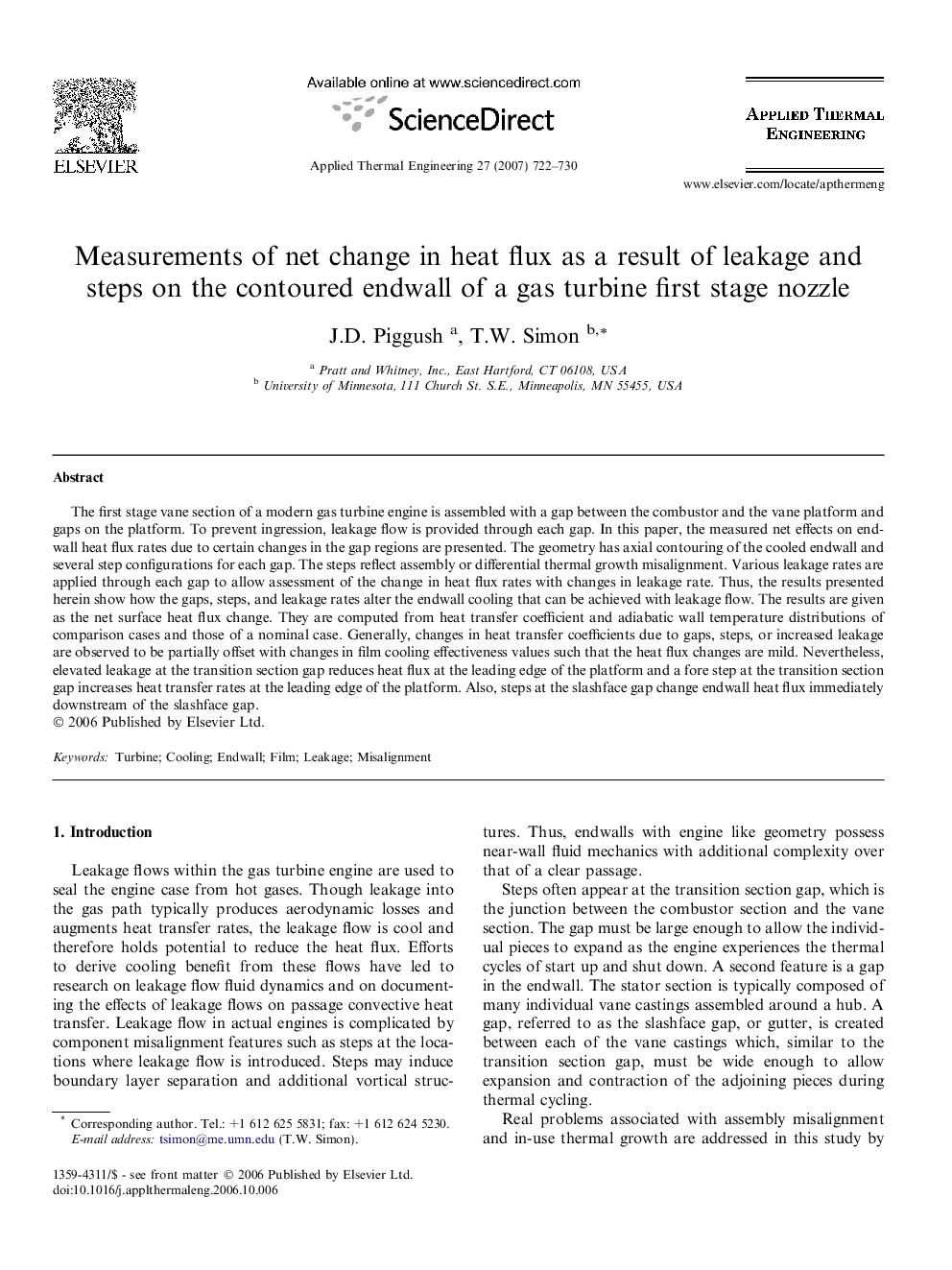| Article ID | Journal | Published Year | Pages | File Type |
|---|---|---|---|---|
| 649597 | Applied Thermal Engineering | 2007 | 9 Pages |
The first stage vane section of a modern gas turbine engine is assembled with a gap between the combustor and the vane platform and gaps on the platform. To prevent ingression, leakage flow is provided through each gap. In this paper, the measured net effects on endwall heat flux rates due to certain changes in the gap regions are presented. The geometry has axial contouring of the cooled endwall and several step configurations for each gap. The steps reflect assembly or differential thermal growth misalignment. Various leakage rates are applied through each gap to allow assessment of the change in heat flux rates with changes in leakage rate. Thus, the results presented herein show how the gaps, steps, and leakage rates alter the endwall cooling that can be achieved with leakage flow. The results are given as the net surface heat flux change. They are computed from heat transfer coefficient and adiabatic wall temperature distributions of comparison cases and those of a nominal case. Generally, changes in heat transfer coefficients due to gaps, steps, or increased leakage are observed to be partially offset with changes in film cooling effectiveness values such that the heat flux changes are mild. Nevertheless, elevated leakage at the transition section gap reduces heat flux at the leading edge of the platform and a fore step at the transition section gap increases heat transfer rates at the leading edge of the platform. Also, steps at the slashface gap change endwall heat flux immediately downstream of the slashface gap.
